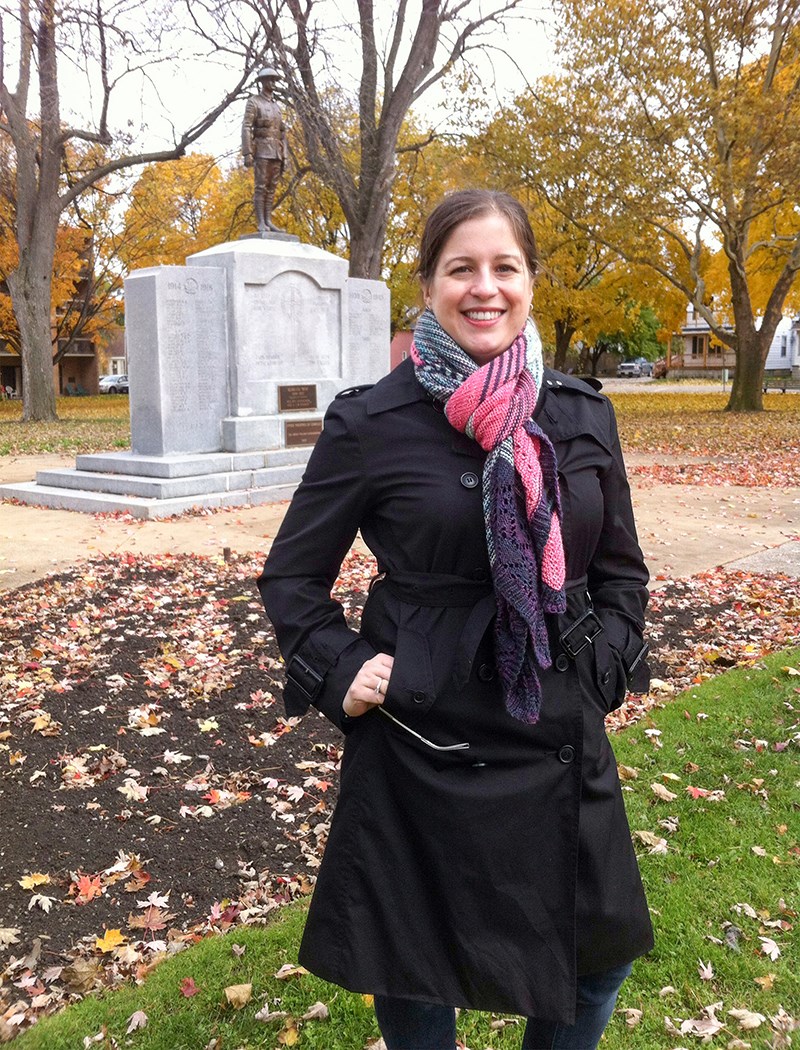Phil Egan
Sarah Lockyer was a schoolgirl idly channel-surfing one Sunday morning when she stumbled across a Canadian crime re-enactment series called “Exhibit A.”
On it, a female forensic anthropologist explained how she confirmed a body unearthed from a backyard wasn’t that of a woman who’d abandoned her family, as neighbours believed.
Instead, she was a murder victim killed by her husband.
“That’s cool,” thought the 16-year-old Lockyer. “I might like to do that.”
Eight years of university and a fruitless two-year job search later, the Ph.D. in forensic anthropology was hired as co-ordinator of the Casualty Identification Program at Canada’s Department of National Defence.
Lockyer, 32, was keynote speaker at a Sarnia dinner on Nov. 4 organized to commemorate the 100th anniversary of the armistice that ended the First World War.
For more than 30 minutes, she enthralled a sold-out crowd as she described a case study that began with the discovery of human remains and moved through identification and reburial.
Construction work and excavations on the battlefields of France and Belgium are unearthing Canadian soldiers from previously unknown graves, and it’s Lockyer’s job to figure out who they are and arrange for reburial in a military cemetery with full regimental honours.
More than 27,000 Canadian soldiers who fought in 20th century conflicts lie in unknown graves, including 20,000 from the First World War alone.
Using DNA from family members, Lockyer’s unit has been able to confirm the identity of 29 Canadian soldiers and 19 more from other nations.
The New Brunswick native is currently working on 32 more sets of remains.
“I love my work,” she told The Journal, describing how being able to positively identify lost soldiers for reburial with their comrades is “incredibly rewarding.”
And for members of Canada’s armed forces who are currently serving “it’s a reminder that their country never abandons them,” she said.
As Sarnia marks the 100th anniversary of the end of the Great War, old battlefields continue to surrender lost souls and Lockyer’s critical and and honourable work goes on.
The TurnerMoore Flanders Fields Dinner was the second in a series of annual military dinners hosted by the Sarnia Historical Society. Local military historian Tom Slater, author of the War Remembrance Project, also spoke at the event.
